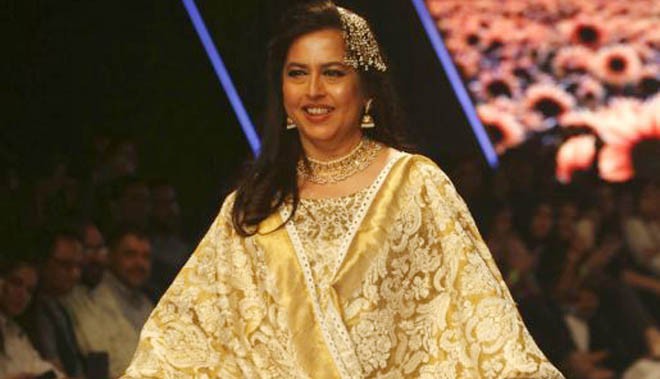
As a woman what would you like to hear -- "You look amazing" or "You are amazing"?

The catwalk is where you see ‘beautiful’ women. Thin, young, unblemished, unwrinkled women. Because that is our criteria of beauty. The fashion arena has no place for cellulite and scars, nor does it welcome aging.
But a recent fashion show by designer Cheena Chhapra in Pakistan Fashion Week (PFW) in Karachi was clearly thinking outside the box. These were, what the designer called in her Instagram post, "real women". There were white-haired women and over-sized women and women of all ages and sizes… including pregnant women. They were real alright. But were they beautiful?
50 is the new…?
The pressure on women is immense. ‘Kill me but make me young’ is the silent but definite mantra. The compliment a woman is conditioned to receive as the biggest compliment is this: "Oh my God, you look so young, I thought your daughter was your sister!" It started with ‘40 is the new 30’. You had to look a decade younger. Now it’s 60 is the new 40’, and the yawning gap that women must cover up has reached about 20 years.
Even the most honest of women who don’t lie about anything else will be found sneakily hiding a few years from their age. The white hair near the forehead are not welcome for a woman; neither is the frizz or the thinning of hair in the front of the crown. It is a much tougher deal for a woman if, because of any reasons, chemotherapy for example, she loses hair.
But men are ok even if they are bald, and in fact are considered more "distinguished looking" if they have gray or silver hair.
These judgments are not just coming from men. They are coming from women against other women too. Our remarks, attitudes and body language end up impacting other women in terms of how they look at themselves. Thus the increased emphasis on invasive procedures to make lips look plumper, skin look more stretched, the nose look less droopy, and the face look unwrinkled. There are even more invasive procedures for many body parts, better left unsaid.
Sized up
Each one of us, at some stage in life, has heard comments about our weight and size and body type. "You look too thin; are you ill?" if you have lost weight, interspersed with unasked for suggestions to put on thora sa (a little bit). Or "You’ve put on haven’t you? I know a great Zumba instructor". When women go looking for girls for their sons or brothers, they want the "slim, fair" variety. It is as if society measures you up in kilogrammes instead of talents and values. Fat shaming is not always verbal or direct. It can be done in a subtle manner, making the other person feel lesser because of the extra weight.
While fitness is important, both in terms of health as well as well-being, we are born with certain genetic dispositions when it comes to our body types -- the pear shape, the apple shape, the hour glass shape. We don’t really have a choice in that.
Women’s bodies undergo multiple changes over time due to hormonal ups and downs, childbirth, or simply age. You cannot and will not have a body of a 25 year old if you are 45, but you can be fit and healthy if you work at it.
We, the objects
The problem lies in women being reduced to "objects" of beauty, of desire, and of attraction. This is done not just by men, nor just by women, but by societies as a whole. We almost see women in inanimate terms. This era of hyper-sexualisation leaves women of no age -- little girls, young women, middle-aged women or even elderly women. It seems we took Keats’ "A thing of beauty is a joy forever" quite literally, often seeing this timeless line of poetry as an implication towards women being a ‘thing’ of beauty. As women, don’t we recognise that this objectification dehumanises us somewhere? But we are as much a part of the problem as men.
Big women on the small catwalk
Why initiatives such as Chappra’s show are important is because they can go a long way in modifying, if not completely altering, perceptions about what comprises a beautiful woman. But such initiatives do not go down well with everyone. The show got mixed feedback. Some appreciated it as a game-changer, while others said these big women on the small catwalk did not belong there.
For women, it is important to take stock of themselves and ask themselves the question, "What is it that defines me?" If it is what you look like, and if that is the source of the highs and lows of your self-esteem, then clearly there is a problem. It is also important to honestly ask ourselves how we look at other women -- do we value them on the basis of how they weigh, dress and look, or on the basis of who they are and what they do.
Change trickles in slowly, and it takes forever to change mindsets. But unless we, as women, start the change from within, we cannot expect society to change from without. So the next time you compliment a woman, let it be about more than "You look amazing", and move it to "You are amazing".